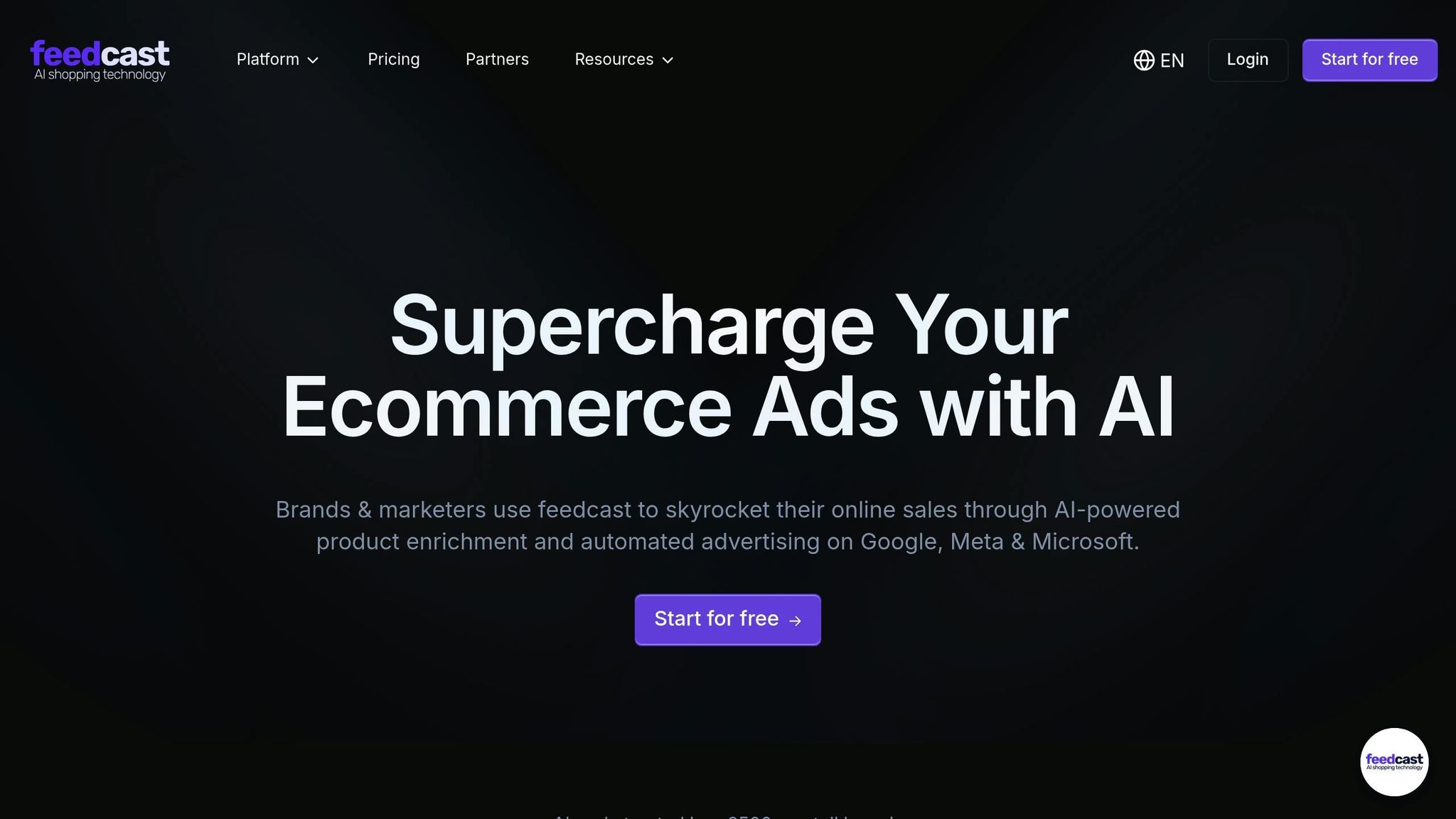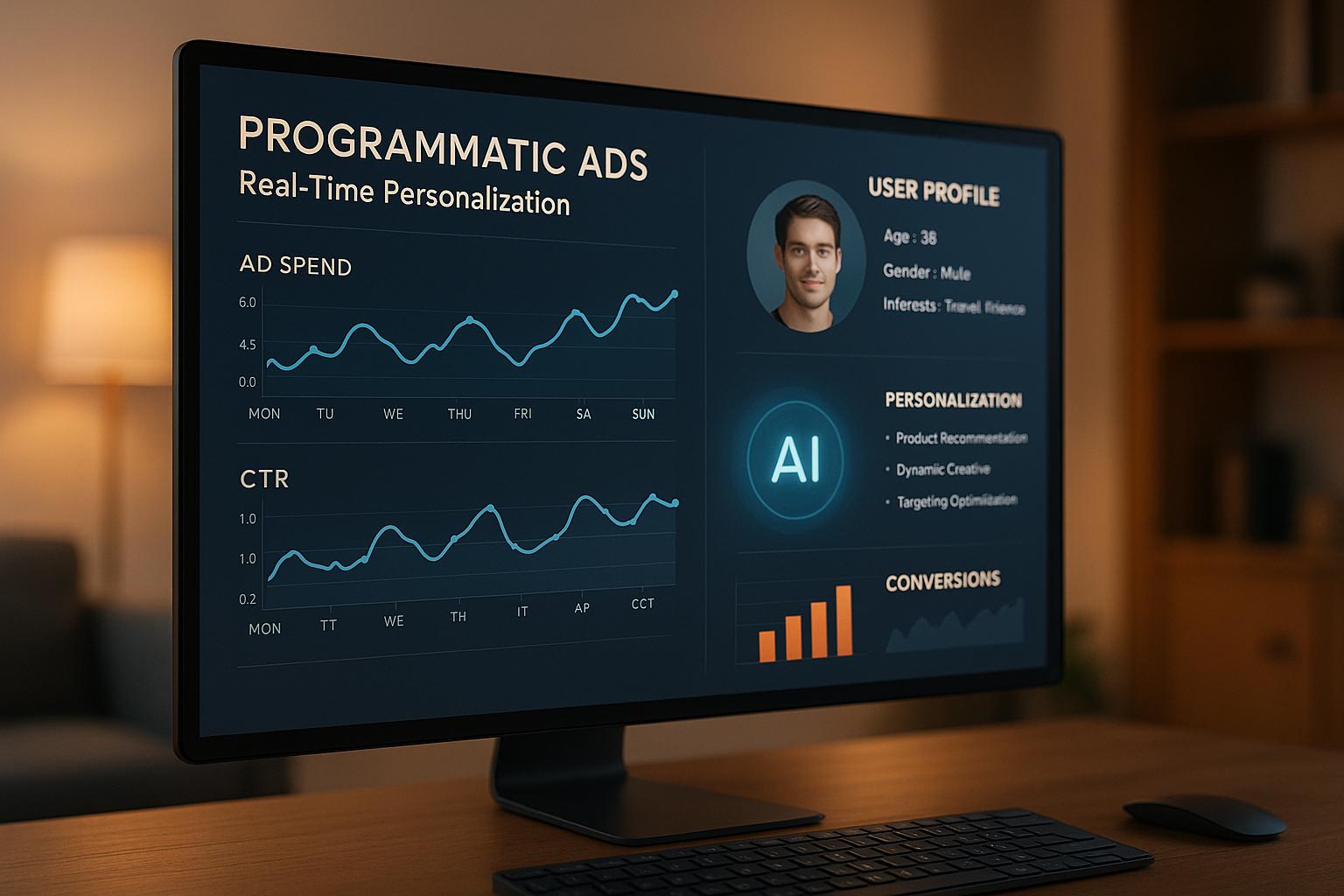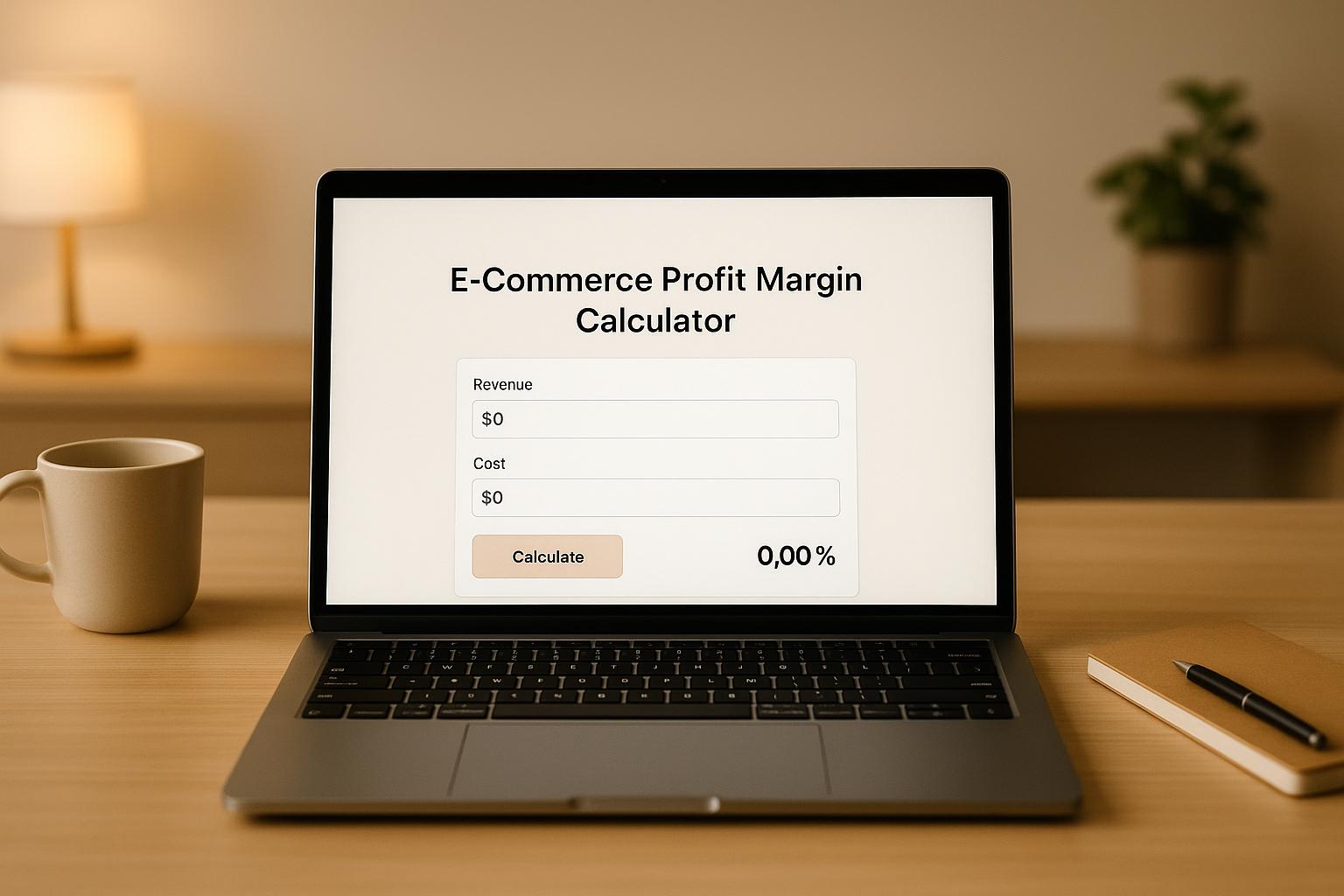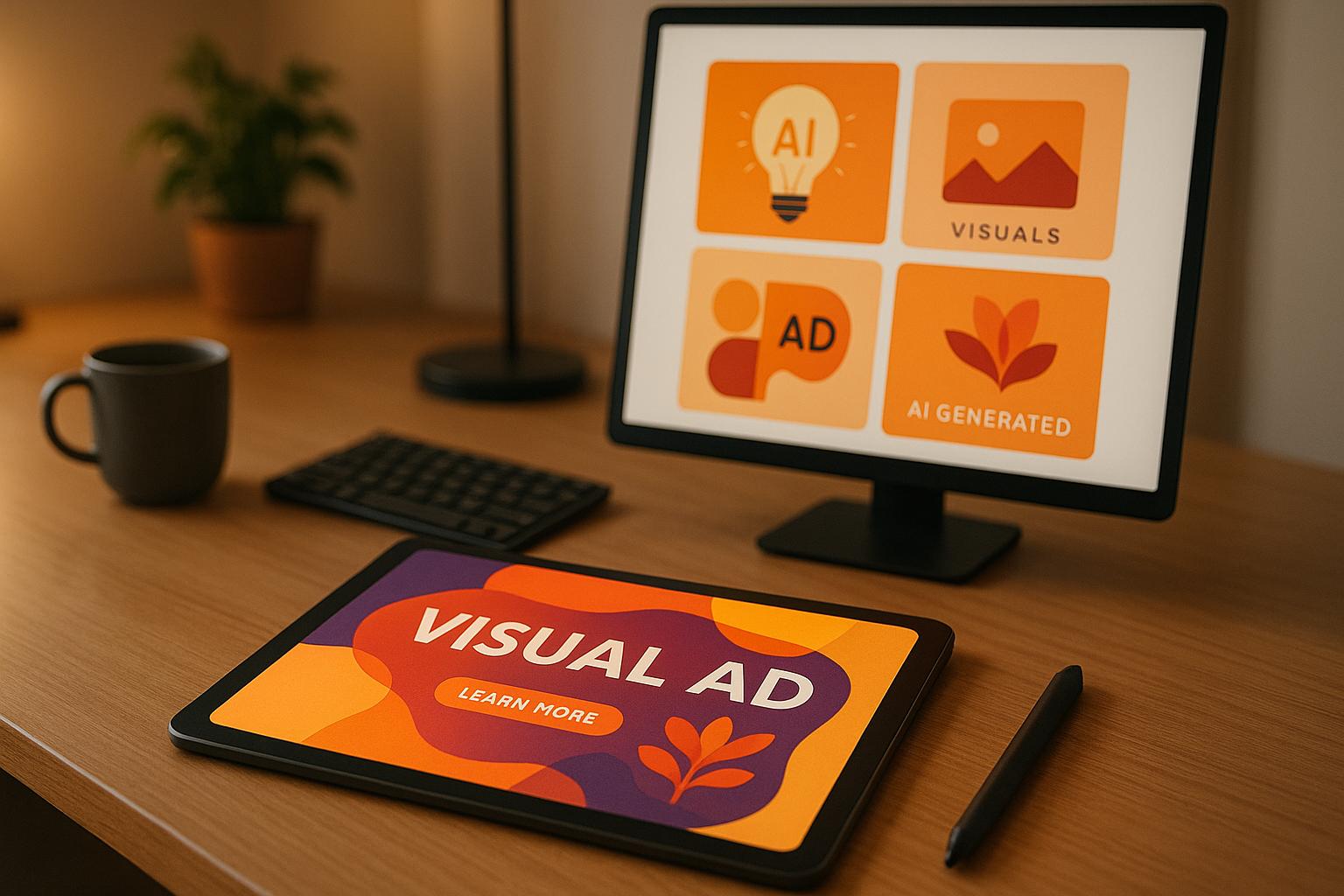How AI Changes Retargeting Strategies
AI is transforming retargeting strategies, making them more precise, personalized, and effective. Here’s how AI is reshaping the way businesses reconnect with potential customers:
- Personalized Ads: AI analyzes customer behavior (like browsing history or past purchases) to deliver tailored messages that resonate with individual users.
- Higher Conversion Rates: AI-driven personalization can boost conversions by 10-20%, with 91% of shoppers preferring brands offering relevant recommendations.
- Automated Campaigns: Platforms like Feedcast.ai simplify ad management by optimizing product data, targeting high-value audiences, and automating campaigns across channels like Google, Meta, and Microsoft Ads.
- Real-Time Adjustments: AI tracks user behavior in real time, enabling dynamic pricing, audience segmentation, and ad optimizations.
- Unified Dashboards: Tools like Feedcast.ai provide a single view of campaign performance, saving businesses time and reducing ad spend waste.
AI-powered retargeting not only increases efficiency but also ensures ads are shown at the right time to the right audience, turning casual visitors into loyal customers.
Using AI for Data Collection and Audience Targeting
AI Data Collection and Analysis
AI has transformed how businesses collect and analyze data by diving deep into customer interactions. It examines multiple touchpoints - like browsing history, social media activity, and purchase behavior - to build detailed, up-to-the-minute customer profiles [1][2].
One of AI's strengths is its ability to process data in real time, uncovering patterns that might go unnoticed by human analysts. For instance, when someone visits your website, AI tracks their session length, pages viewed, and product interactions. It then combines this with past data to paint a complete picture of what the customer might want [2].
AI can even predict when someone is likely to make a purchase by comparing their current actions to historical trends [1]. For example, an e-commerce brand used AI-driven retargeting to personalize ads for customers who abandoned their carts, leading to a 40% boost in conversion rates [3]. Similarly, a B2B SaaS company saw a 25% rise in trial sign-ups after using AI to analyze browsing and engagement patterns [3].
Better Audience Segmentation with AI
AI takes audience segmentation to the next level by creating highly specific customer groups. While traditional methods rely on broad categories like age, location, or purchase history, AI digs deeper, analyzing behavior and engagement to form precise segments [3]. What’s more, AI models continuously learn, improving their insights with every new interaction [4].
This technology also makes real-time adjustments possible. As customer behaviors shift or new trends emerge, AI automatically updates audience segments and targeting strategies - no manual tweaks required [1]. These capabilities have proven their worth: one e-commerce platform reported a 20% revenue increase after implementing AI-driven retargeting [2].
Feedcast.ai's Data Management Features

Feedcast.ai harnesses these advanced AI techniques to power its data management tools. Its AI-driven product feed management system simplifies how businesses handle product data, which is essential for effective retargeting campaigns [5]. The platform integrates with e-commerce systems like Shopify, WooCommerce, and PrestaShop, using AI to enhance product titles, descriptions, and attributes for better visibility across channels.
Feedcast.ai also consolidates data from multiple advertising platforms - like Google, Meta, and Microsoft Ads - into a single, unified view of customer behavior [5]. This comprehensive analysis helps businesses target new customers and retarget existing ones more effectively.
Creating Personalized Ads and Automated Campaigns
Building Personalized Dynamic Ads
AI takes advertising to a whole new level by turning static ads into dynamic, tailored experiences. Instead of bombarding everyone with the same generic ad, AI digs into browsing habits, purchase histories, and even social media activity to craft content that speaks directly to each individual user [7].
This personalized approach doesn’t just feel more engaging - it delivers results. For example, Amazon credits 35% of its revenue to AI-driven personalized product recommendations [6]. Similarly, ASOS saw a 75% jump in email click-through rates after introducing AI-powered recommendations, along with a notable boost in overall customer interaction [6].
"AI personalization refers to the use of artificial intelligence (AI) to tailor messaging, product recommendations and services to individual users. By analyzing data and learning from user behavior, AI-powered tools can create highly personalized encounters that enhance customer experiences and increase customer engagement."
– Molly Hayes, Content Writer, IBM Consulting [7]
AI doesn’t just stop at understanding past behavior - it reacts in real time. When someone visits your site, AI identifies the products, offers, or messages most likely to catch their attention and drive action [6]. This means two visitors on the same product page could see entirely different recommendations, pricing, or promotions based on their unique preferences.
A great example of this in action is Overstock.com, which uses AI to customize email marketing. From personalized product suggestions to tailored send times, their strategy is all about making every interaction feel relevant to the individual customer [6].
Next, let’s explore how AI takes this personalization and scales it across multiple channels.
AI Campaign Automation
AI doesn’t just personalize ads - it automates them, ensuring that your campaigns are optimized across every channel. By analyzing user behavior, AI can predict the best time, platform, and message to re-engage customers. For instance, Booking.com uses AI to automatically send perfectly timed, personalized follow-ups, boosting re-engagement rates [6].
This automation also extends to pricing. With AI-powered dynamic pricing, businesses can adjust prices in real time based on factors like competitor rates, demand trends, and inventory. This strategy has been shown to potentially increase revenue by as much as 20% [6].
Another standout example is The North Face, which leverages IBM Watson’s AI to create highly specific customer segments. The result? A 75% conversion rate among customers who interact with their personalized recommendations [6].
Managing Campaigns with Feedcast.ai
Feedcast.ai takes the power of AI personalization and automation and brings it all together in one place. This platform simplifies campaign management by generating personalized ad copy for each channel, ensuring your message hits the right note with every audience.
Its smart targeting tools help businesses connect with new customers while keeping existing ones engaged. Feedcast.ai’s unified dashboard streamlines everything - messaging, budgets, and targeting - so your campaigns stay consistent and effective across platforms.
On top of that, Feedcast.ai makes product feed management effortless. The platform automatically optimizes product titles, descriptions, and attributes, making your recommendations more relevant and boosting conversions.
With its real-time metrics and performance tracking, Feedcast.ai provides a clear view of how your campaigns are performing across different audience segments and channels. This level of insight allows you to fine-tune retargeting strategies for even better results.
Finally, the platform’s automation ensures that your multi-channel campaigns stay efficient and cohesive. By adapting your ads to fit the unique requirements of each platform, Feedcast.ai eliminates the hassle of manual adjustments while maximizing overall campaign impact.
Retargeting with AI-powered dynamic ads - Business Guide
sbb-itb-0bd1697
Step-by-Step Guide to AI Retargeting Implementation
Using the power of AI and tools like Feedcast.ai, you can create highly effective retargeting campaigns. Here’s how to get started.
Step 1: Set Up Tracking and Analytics
The foundation of AI retargeting is accurate and detailed data collection. To achieve this, implement tracking systems that capture every interaction users have with your brand.
Start by integrating tools like Meta Pixel and Google Ads Tag across your website and mobile app. Pair this with Google Analytics 4 to gain a comprehensive view of the customer journey. These tools track key actions, such as page visits, product interactions, cart additions, and checkout events, giving you deep insights into user behavior [8][9].
Ensure your data collection complies with privacy laws like CCPA and GDPR [9]. This means being transparent about how you collect data and giving users control over their information. Properly configured tracking systems allow AI to analyze user journeys and uncover retargeting opportunities.
For the best results, integrate your tracking systems with your CRM and advertising platforms. This creates a unified view of customer interactions, which is critical for AI to perform effectively.
Once tracking is in place, the next step is refining your product data for retargeting.
Step 2: Improve Product Data with AI
With tracking set up, focus on optimizing your product data. AI can enhance product feeds by improving titles, descriptions, and images to make them more relevant and searchable [8].
Feedcast.ai simplifies this process by using AI to clean up errors, fill in missing details, and tailor product data for each platform. For instance, instead of a generic product title like "Blue Shirt", AI can generate something more engaging like "Men's Premium Cotton Blue Dress Shirt - Slim Fit." These enhancements improve how your products are perceived and promoted.
You can import product data from platforms like Shopify, WooCommerce, or PrestaShop, or upload files via Google Sheets, CSV, or XML. The AI then works automatically, saving you hours of manual effort.
Once your product data is optimized, it’s time to put it to work across multiple channels.
Step 3: Launch and Optimize Multi-Channel Campaigns
Now, it’s time to roll out your AI-driven retargeting campaigns across platforms. By connecting your ad accounts to a unified platform, you can manage everything from one place [8][10].
AI tools enable advanced audience segmentation based on user behavior and intent. For example, the system can differentiate between first-time visitors, cart abandoners, and loyal customers, delivering tailored messages to each group [11]. This level of precision is far beyond what manual methods can achieve.
Campaigns can be launched across multiple channels simultaneously, with AI handling real-time bid adjustments and creative optimizations. The system monitors key performance metrics - such as click-through rates, ROAS, and conversion rates - and adjusts budgets and targeting automatically to maximize results [11].
A great example of this approach is Nike. In 2023, they used AI-driven personalization in their retargeting campaigns, showing users ads for products they had viewed or tried virtually. This strategy led to a 24% boost in digital sales and a 20% higher conversion rate for AR try-on campaigns [10].
With AI working around the clock, your campaigns continuously improve as the system learns from performance data.
Benefits of AI-Powered Retargeting
AI-powered retargeting offers benefits that go far beyond automation. Here’s how it compares to traditional retargeting:
| Benefit | Traditional Retargeting | AI-Powered Retargeting |
|---|---|---|
| ROI Improvement | Slower results with manual optimization | 15-20% higher conversion rates through predictive targeting [10][11] |
| Time Savings | Manual bid management and audience creation | Automated campaign adjustments save hours of work |
| Personalization | Basic demographic targeting | Dynamic content tailored to individual user behavior |
| Campaign Management | Separate dashboards for each platform | Unified control across platforms like Google, Meta, and Microsoft Ads |
| Data Utilization | Limited to basic metrics | Real-time analysis of browsing patterns, purchase history, and engagement signals [9][11] |
AI-powered retargeting brings better results through precise audience targeting, deeper personalization, and automated optimizations [8][12]. Businesses often report improved conversion rates, reduced ad spend waste, and significant time savings [11].
Perhaps the most impressive feature is AI's ability to predict when users are most likely to convert. By delivering ads at the right moment, AI ensures your campaigns reach customers when they’re most receptive. This level of precision is something traditional methods simply can’t achieve.
With platforms like Feedcast.ai handling the technical complexities, you can focus on the creative and strategic aspects of your campaigns, leaving the heavy lifting to AI.
Challenges and Future of AI Retargeting
AI-powered retargeting has opened up new possibilities for businesses, but it also brings its share of challenges. Recognizing these hurdles and staying ahead of emerging trends can help businesses refine their strategies for better results.
Common AI Retargeting Challenges
One of the biggest obstacles is data quality issues. Poor-quality data can derail AI predictions, and it’s a costly problem - companies lose millions each year because of it [13]. Inaccurate customer records, inconsistent product information, and outdated data can all hinder results. To address this, businesses should prioritize regular data quality assessments, clean up their records, and establish processes to keep data accurate. Tools like Feedcast.ai help tackle this by automating feed error detection and improving data with AI.
Another challenge is integration complexity. Many businesses still operate with siloed data across legacy systems that don’t support smooth AI integration. Without seamless APIs, creating unified customer profiles becomes difficult.
Talent shortages in AI and data science further complicate things. A lack of skilled professionals can slow down implementation and optimization, especially for companies trying to build AI solutions internally.
Ethical concerns and bias also demand attention. AI systems can unintentionally reinforce biases present in customer data, leading to potentially discriminatory practices. With privacy regulations becoming stricter, businesses must find ways to personalize ads without compromising user privacy.
Lastly, organizational resistance can stall progress. Employees may worry about job displacement or feel overwhelmed by new technologies. Launching pilot projects and offering targeted training can help ease these concerns and encourage adoption.
While these challenges are significant, they also set the stage for advancements that will shape the future of AI retargeting.
Future Trends in AI Retargeting
Looking ahead, several trends are set to redefine AI retargeting, making it more responsive and privacy-conscious.
- Real-time personalization is advancing, allowing AI to adjust ad messages instantly based on factors like weather, location, time of day, or even current events. This creates more relevant and timely ad experiences.
- Predictive customer lifetime value modeling is becoming more refined. Instead of focusing solely on immediate conversions, businesses can allocate budgets based on a customer’s long-term potential, improving ROI across different segments.
- Cross-device identity resolution is expected to improve, enabling AI to connect user behavior across devices like smartphones, tablets, desktops, and connected TVs. This ensures consistent retargeting experiences across platforms.
- Privacy-first targeting is emerging as a critical focus. With the decline of third-party cookies and evolving privacy laws, AI is shifting toward first-party data and privacy-preserving technologies to maintain effective audience targeting.
- Voice and visual search integration is expanding as consumers increasingly rely on voice assistants and image-based searches. AI systems will need to adapt to these new behaviors to deliver impactful campaigns across both traditional and newer channels.
- Automated creative generation is evolving rapidly. AI will soon be capable of producing personalized ad copy, visuals, and videos at scale, optimizing them in real time based on individual user preferences.
How Feedcast.ai Adapts to Future Trends
Feedcast.ai is staying ahead of these changes with a platform designed to meet the demands of modern AI retargeting. Its modular, API-first architecture simplifies integration with existing systems and ensures compatibility with emerging technologies.
The platform offers scalable infrastructure, allowing businesses to start small and expand as needed. A free tier provides access to basic AI tools, while premium plans unlock support for a wider range of products and advertising channels.
Through multi-channel unification, Feedcast.ai helps businesses manage campaigns across an increasingly complex landscape, consolidating efforts as new platforms and ad formats emerge.
Additionally, the platform emphasizes ethical AI practices by incorporating continuous monitoring and offering expert support through premium plans. This helps address talent gaps and ensures smooth implementation of advanced AI solutions, making it easier for businesses to navigate the challenges of AI-powered retargeting.
Conclusion: Getting Started with AI Retargeting
AI is reshaping how e-commerce businesses approach retargeting, offering more precise, automated, and profitable campaigns. By analyzing customer behavior, AI enables personalized ads to appear at just the right time - turning casual browsers into buyers and one-time shoppers into repeat customers.
To get started, take a strategic and gradual approach rather than overhauling your entire system at once. First, set clear goals. Are you aiming to boost conversion rates, improve customer retention, or enhance overall satisfaction? Next, identify your primary challenges, such as cart abandonment or low engagement, and explore how AI can address these issues.
Start small and scale over time. Basic AI tools like chatbots or personalization engines are affordable, often costing under $200 per month [14]. Pick one area to pilot, gather performance data, and expand based on proven results. For instance, Hexaware used Google Cloud's PaLM 2 to help a furniture retailer create SEO-optimized product descriptions across 19 departments and over 3,000 subclasses. This effort reduced content creation time by 75%, boosted product visibility by 25%, and increased conversion rates by 20% [14]. Similarly, a European retailer used AI-powered segmentation to analyze customer behavior, leading to a 20% improvement in campaign ROI [14].
For those ready to dive deeper, tools like Feedcast provide an all-in-one solution. Starting at $99 per month for the Autopilot plan, Feedcast allows you to manage up to 1,000 products across multiple advertising channels. Its AI-powered features handle tasks like product enrichment and real-time bid optimization, all from a unified dashboard. This eliminates the need for juggling separate tools and simplifies campaign management.
However, success with AI retargeting isn't just about the technology - it’s about your team. Equip them with the training they need to master these tools and ensure the solutions integrate seamlessly with your existing systems. While AI automates much of the process, human insight is essential for steering strategy. Just as Feedcast.ai centralizes campaign management, your team’s expertise will centralize your business goals.
The future of retargeting is already here. Start with a focused pilot project, track your results, and scale based on ROI. By doing so, you'll deliver personalized customer experiences and stay ahead in a competitive market.
FAQs
How does AI make retargeting strategies more precise and personalized compared to traditional methods?
AI is reshaping retargeting strategies by diving deep into customer data - think browsing habits, purchase history, and engagement trends. With this wealth of information, businesses can craft ads that feel personal and relevant, aligning perfectly with individual preferences. The result? Better engagement and increased conversions.
What sets AI-driven retargeting apart from older methods is its ability to make real-time adjustments. By continuously analyzing customer behavior, campaigns can stay fresh, timely, and effective. This dynamic approach not only boosts ROI but also helps build stronger, lasting customer relationships.
What are the main advantages of using AI-powered tools like Feedcast.ai for managing multi-channel advertising?
AI-powered tools like Feedcast.ai make multi-channel advertising easier and more efficient by automating tasks like managing product feeds, creating ads, and optimizing campaigns. This automation not only saves time but also cuts down on manual work, streamlining the entire process.
With AI-driven insights, these platforms help fine-tune audience targeting and boost campaign performance, leading to a higher return on investment (ROI) and deeper customer connections. Plus, a centralized dashboard offers clear, data-focused analytics across all channels, empowering businesses to make smarter decisions and achieve better outcomes.
What are the main challenges of using AI for retargeting, and how can businesses resolve them?
Using AI for retargeting isn’t without its difficulties. Issues like data quality, ethical challenges, and integration complexities can hinder its effectiveness. For instance, if your data is incomplete or poorly organized, the AI might not perform as expected. At the same time, concerns about privacy and potential biases need to be addressed responsibly. On top of that, integrating AI into existing systems can be a tricky process.
To tackle these challenges, businesses should start by thoroughly cleaning and organizing their data. Ensuring compliance with privacy laws and using tools to identify and minimize bias are also crucial steps. Beyond that, having a clear strategy in place and providing teams with proper training can make the transition smoother. These efforts not only help teams trust AI-driven insights but also lead to more effective retargeting and streamlined marketing operations.
Yohann B.




